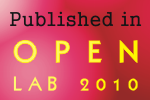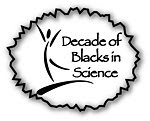Many people think that if you live in the city and you want to see wildlife, then you must visit the zoo or botanical gardens. But that is not at all true. Metropolitan areas are teeming with wildlife. There are trees, birds, grasses, flowers, weeds, butterflies, moths, lichens, squirrels, dragonflies, earthworms, ducks, and geese. Even predators like owls, hawks, coyotes and foxes live in the city and suburban areas.
The goal of my program will be to introduce youth, and adults alike, to the many different species of plants, animals, and other living things that are apart of the 'Urban Ecosystem' and help them understand more about our world the role we play in preserving it for future generations.
Members of the Urban Ecosystem
Keep a look out for some of these wild creatures.
Birds
Rodents and other Gnawing Mammals
Insects, Spiders, and other Arthropods
Ants, Bees, and Wasps
Predators and Raptors
Aquatic Animals
Waterfowl
Snakes, Turtles, and other Reptiles
Frogs, Salamanders and other Amphibians
Trees, Flowers, Grasses, and Sedges
In the meantime, I invite you to take a closer look at the patches of nature that surround you and get to know some of your wild neighbors. To learn more about the wildlife in your area, check out some of these websites and begin your own Urban Science Adventures! Write to tell me about your adventures or to share your favorite wildlife websites with me.
Bird Watching and Identifying:
The Urban Bird Program - http://www.birds.cornell.edu/programs/urbanbirds/ubs_BIHMainEN.html
Missouri Department of Conservation, Notes on Birds - http://www.mdc.mo.gov/nathis/birds/
The Audubon Society - http://www.audubon.org/, the St. Louis Chapter - http://www.stlouisaudubon.org/
The American Bird Conservancy - http://www.abcbirds.org/
Tree Identification and Crafts
Ohio Trees - http://www.oplin.org/tree/
Missouri Department of Conservation, Missouri Urban Trees - http://www.mdc.mo.gov/forest/urban/urbantre/index.shtml
Leaf and Bark Rubbings - http://www.21stcenturyadventures.com/AdventureKids/naturecraft.html
Identifying Mammal Tracks and Marks
Missouri Department of Conservation, Notes on Mammal Tracks - http://www.mdc.mo.gov/kids/out-in/2002/01/1.htm
Bugs, Insects, Spiders, and other Invertebrates
North American Butterfly Association - http://www.naba.org/
Fungi and Lichens
North American Mycological Association - http://www.namyco.org/
Reptiles and Amphibians (Herpetafauna)
Snakes, Urban Wildlife Control - http://www.oznet.ksu.edu/library/wldlf2/L864.pdf
USGS News Articles about Amphibian Decline in Urban Areas - http://soundwaves.usgs.gov/2006/01/research.html
Missouri Department of Conservation, Snakes of Missouri - http://mdc.mo.gov/nathis/herpetol/snake/
Missouri Department of Conservation, Guide to Amphibian and Reptil Conservation - http://mdc.mo.gov/nathis/herpetol/reptile/
Missouri Department of Conservation, Missouri's Frogs and Toads - http://mdc.mo.gov/nathis/herpetol/frog/





















